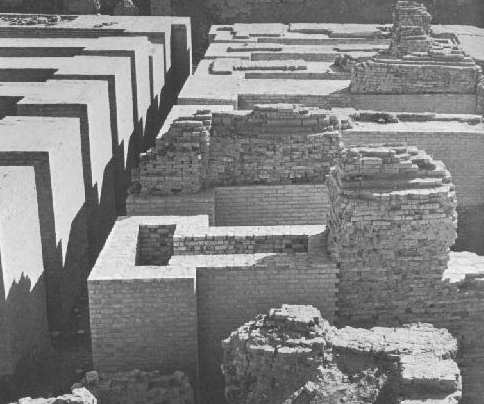Robert Koldewey, 1899 (archaeologist)
While excavating the Southern Citadel, Koldewey discovered a basement with fourteen large rooms roofed with arched stone vaults.
Ancient records indicated that only two locations in the city had made use of stone, the north wall of the Northern Citadel, and the Hanging Gardens.
The north wall of the Northern Citadel had already been found and had, indeed, contained stone. This made it seem likely that Koldewey had found the cellar of the gardens. He continued exploring the area and discovered many of the features reported by Diodorus. Finally a room was unearthed with three large, strange holes in the floor. Koldewey concluded this had been the location of the chain pumps that raised the water to the garden's roof. The foundations that Koldewey discovered measured some 100 by 150 feet. Smaller than the measurements described by ancient historians, but still impressive.
This site quotes part of Koldwey's report (R. Koldewey, `Das Wiedererstehende Babylon', 1913). Koldewey does not mention the Hanging Gardens here, but his measurements of the city walls are similar to those in the eye-witness descriptions, and that may improve our confidence in the rest of what they say. I have pasted that section below:
Those who approached the capital of Babylon in the days of Nebuchadnezzar coming from the north, found themselves about there, where today the Nile-Canal flows, before the colossal fortified wall, which surrounded Babylon. It was a ca. 21 foot thick brick wall before which at a distance of ca. 36 feet stood a ca. 23 1/2 foot thick kiln baked brick wall paralleled by the ca. 10 foot thick wall of the canal. ... The space between the two walls had been filled with soil up to the top of the outer wall. ... This created a roadway sufficiently wide for one four horse chariot and even wide enough for two of these coming from opposite directions to pass each other. On top of this walled circle stood the upper stories of towers facing each other appearing like little dwellings. The towers are ca. 25 feet wide and ca. 132 feet apart from each other. Along the entire front line would have been about 90, and surrounding the city, if it formed a square, would have been 360 towers. How many the outer wall had, we don't know.
